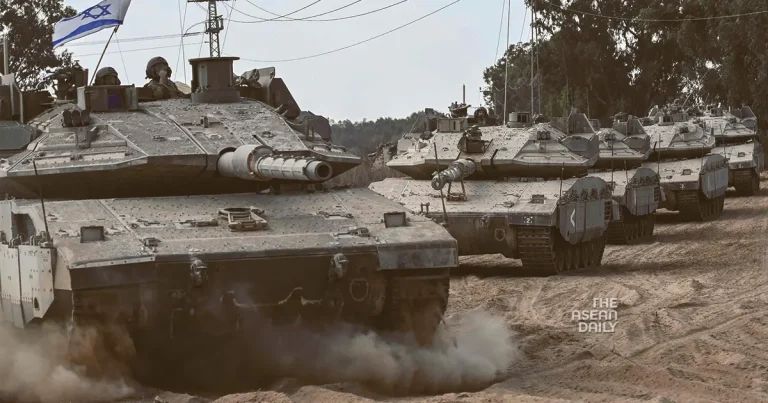3-11-2023 (GAZA) In a major assault on Hamas, Israeli forces have encircled Gaza City, the main city in the Gaza Strip. However, the Palestinian militant group has been resisting the attack through hit-and-run attacks from underground tunnels.
Israel has directed its focus towards Gaza City, aiming to dismantle Hamas’ command structure and urging civilians to seek refuge in the southern parts of the strip.
“We’re currently in the midst of a fierce battle. We’ve achieved significant successes and have advanced to the outskirts of Gaza City,” stated Prime Minister Benjamin Netanyahu. However, he provided no further details on the operation.
Brigadier-General Iddo Mizrahi, chief of Israel’s military engineers, reported that troops are encountering mines and booby traps, indicating that Hamas has prepared itself well for the conflict.
Hamas’ spokesperson, Mr. Abu Ubaida, declared in a televised speech that Israel’s death toll in Gaza is much higher than what the military has disclosed. He warned, “Your soldiers will return in black bags.”
According to Israel, they have lost 18 soldiers and eliminated dozens of militants since the ground operations expanded on Friday.
Residents have reported that Hamas and Islamic Jihad fighters are emerging from tunnels to launch attacks on tanks and then quickly retreating back into the network. Videos from both groups have shown these hit-and-run tactics.
The suffering of Palestinian civilians continues unabated, with UN experts warning of the grave risk of genocide. Shortages of food, fuel, drinking water, and medicine have plagued the population.
“We are getting sick. There is no cooking gas, there is no water, we don’t eat well,” lamented nine-year-old Rafif Abu Ziyada from Khan Younis in the south of the Gaza Strip. She described drinking dirty water and experiencing stomach pains and headaches. The dire conditions have led to pollution and garbage accumulation.
US Secretary of State Antony Blinken has traveled to the Middle East, expressing his intention to discuss concrete steps to minimize harm to civilians in Gaza.
More than a third of Gaza’s 35 hospitals are non-operational, many of which have been transformed into impromptu refugee camps. Medical Aid for Palestinians, a charity, described the situation as “beyond catastrophic,” with overcrowded corridors and numerous medical personnel who have been personally affected by the conflict.
Seven UN special rapporteurs have issued a statement in Geneva, stating their conviction that the Palestinian people are at grave risk of genocide. They are demanding a humanitarian ceasefire to ensure the delivery of aid to those most in need.
US national security spokesperson John Kirby emphasized that temporary, localized humanitarian pauses will not hinder Israel’s right to self-defense. The aim is to explore the possibility of multiple pauses to facilitate aid distribution and ensure the safe evacuation of civilians, including hostages.
During his meetings in Israel and Jordan, Secretary Blinken also intends to discuss the future of Gaza and lay the groundwork for future Palestinian statehood.
The current conflict, the latest in a long-standing conflict, was triggered when Hamas fighters breached the border on October 7. Israel claims that they killed 1,400 people, mostly civilians, and took over 240 hostages in the deadliest day in their 75-year history.
According to Gaza health authorities, Israel’s subsequent bombardment of the densely populated Palestinian enclave, home to 2.3 million people, has resulted in at least 9,061 deaths.
Efforts are being made to evacuate foreign passport holders, their dependents, and critically injured Gazans from the enclave. The Rafah crossing from Gaza to Egypt has been opened for limited evacuations under a Qatari-brokered deal. However, Palestinians continue to face immense challenges and uncertainty as they attempt to navigate the ongoing conflict and its devastating consequences.




